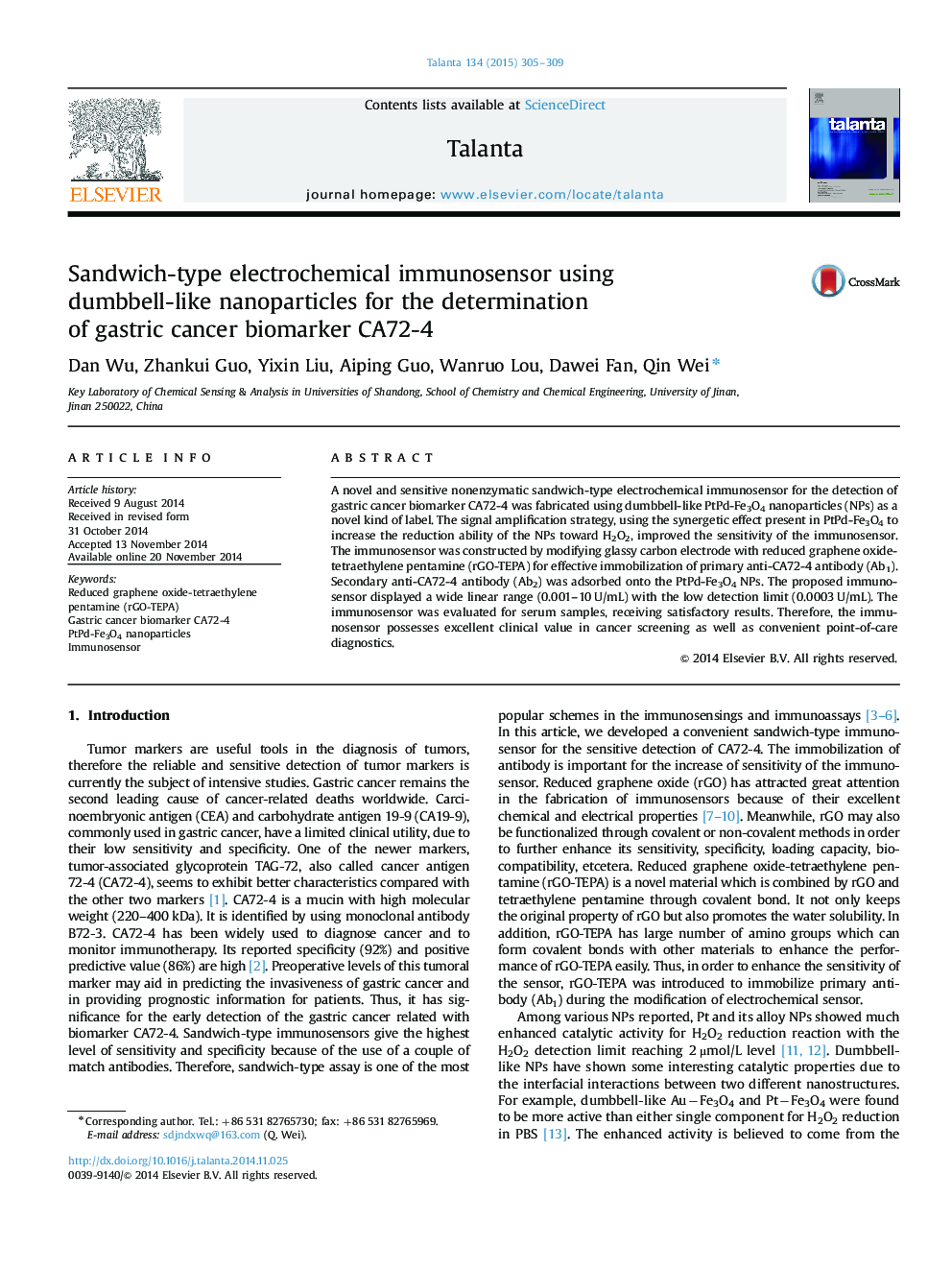| کد مقاله | کد نشریه | سال انتشار | مقاله انگلیسی | نسخه تمام متن |
|---|---|---|---|---|
| 1244083 | 1495801 | 2015 | 5 صفحه PDF | دانلود رایگان |

• A novel electrochemical sensor for the determination of CA72-4 is developed.
• rGO-TEPA and PtPd-Fe3O4 are used as electrode materials and labels.
• PtPd-Fe3O4 shows highly electrocatalytic activity due to synergetic effect.
• The sensor has a wide linear range, low detection limit and good stability.
A novel and sensitive nonenzymatic sandwich-type electrochemical immunosensor for the detection of gastric cancer biomarker CA72-4 was fabricated using dumbbell-like PtPd-Fe3O4 nanoparticles (NPs) as a novel kind of label. The signal amplification strategy, using the synergetic effect present in PtPd-Fe3O4 to increase the reduction ability of the NPs toward H2O2, improved the sensitivity of the immunosensor. The immunosensor was constructed by modifying glassy carbon electrode with reduced graphene oxide-tetraethylene pentamine (rGO-TEPA) for effective immobilization of primary anti-CA72-4 antibody (Ab1). Secondary anti-CA72-4 antibody (Ab2) was adsorbed onto the PtPd-Fe3O4 NPs. The proposed immunosensor displayed a wide linear range (0.001–10 U/mL) with the low detection limit (0.0003 U/mL). The immunosensor was evaluated for serum samples, receiving satisfactory results. Therefore, the immunosensor possesses excellent clinical value in cancer screening as well as convenient point-of-care diagnostics.
Figure optionsDownload as PowerPoint slide
Journal: Talanta - Volume 134, 1 March 2015, Pages 305–309